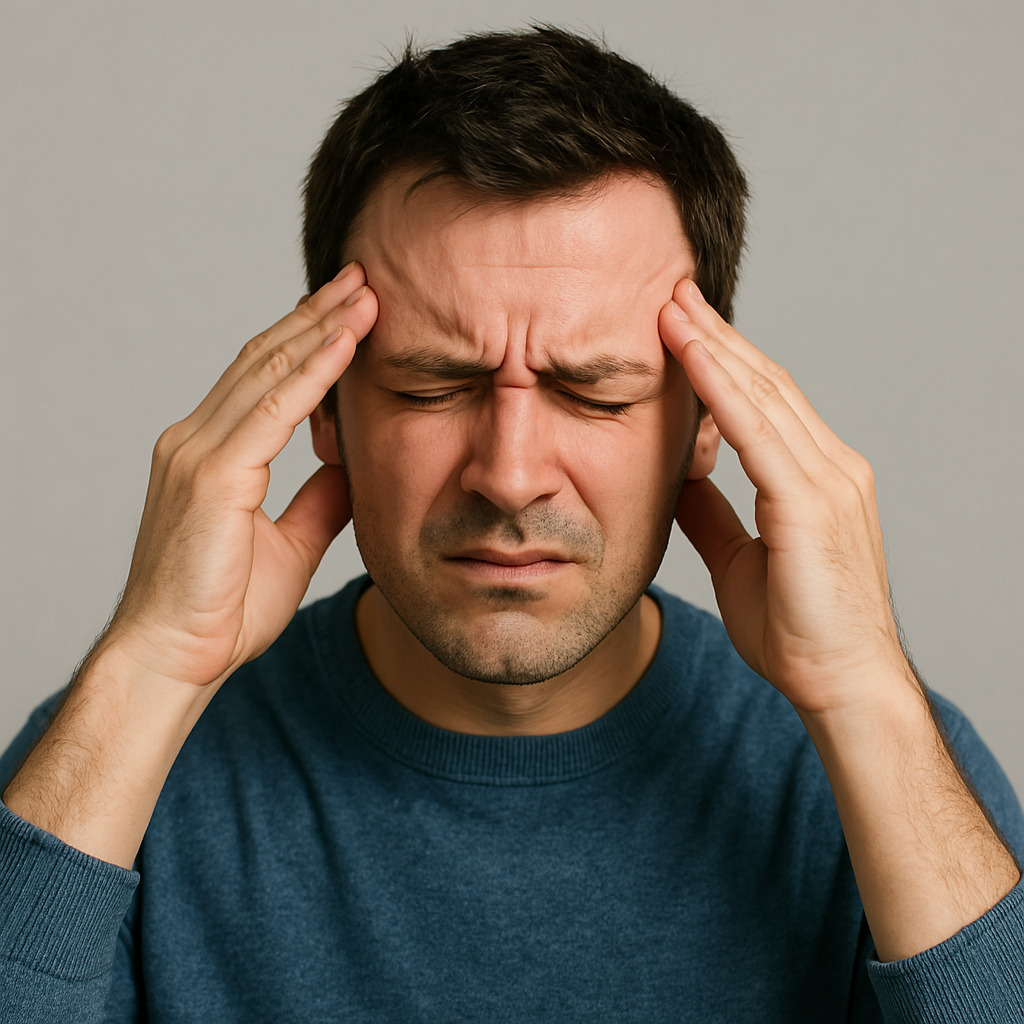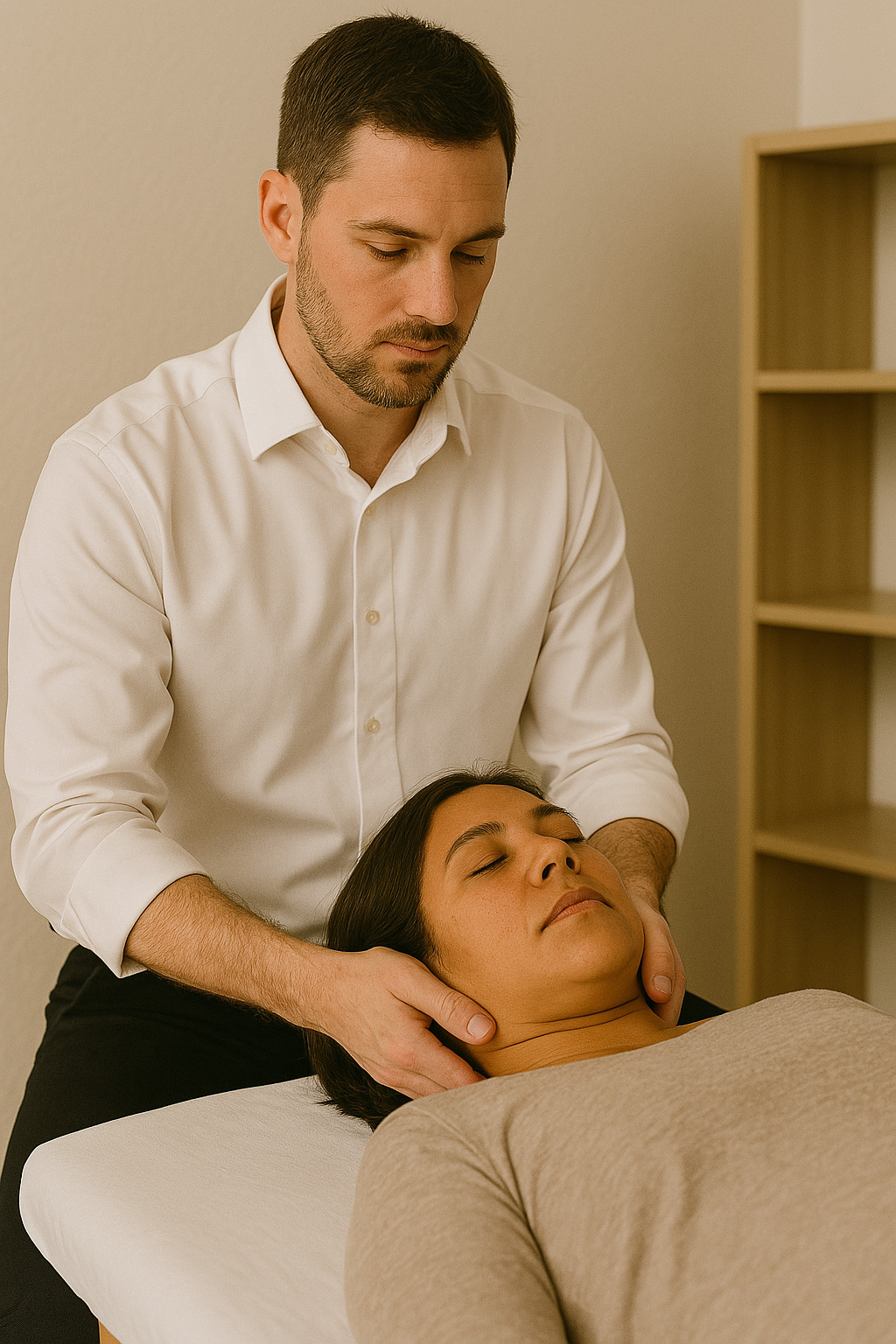How to Relieve Pain at the Base of the Skull

How to Relieve Pain at the Base of the Skull
Pain at the base of the skull is a very common complaint and can be caused by a variety of conditions. These include, but are not limited to tension headaches, nerve compression, poor posture and muscle spasm. If untreated, it can lead to chronic headaches, nerve irritation, and mobility issues. This kind of pain can be so nagging and prevalent as to impact activities of daily living, productivity and even general mood and demeanor. As a chiropractor who has seen countless cases of patients complaining about pain at the base of the skull, I can definitely say how important proper spinal alignment and posture is to prevent and address this condition.
Understanding Pain at the Base of the Skull
-
Common reasons for pain:
1. Occipital Neuralgia
This is a condition where the occipital nerves—running from the top of the spinal cord up through the scalp—become irritated or compressed. From a chiropractic standpoint, this often results from poor posture, spinal misalignments (especially in the upper cervical spine), or muscle tension in the neck and shoulders. These issues can create pressure on the occipital nerves, leading to sharp, shooting, or throbbing pain at the base of the skull. Chiropractic care focuses on correcting misalignments, reducing muscle tension, and restoring normal function to relieve nerve irritation and reduce or eliminate the pain associated with occipital neuralgia.
2. Tension Headaches
Tension headaches often cause dull, aching pain at the base of the skull due to chronic muscle tension in the neck and upper back. From a chiropractor’s perspective, this tension is frequently linked to poor posture, prolonged screen time, or stress, which leads to misalignments in the cervical spine and tightness in the suboccipital muscles. These misalignments can irritate nearby nerves and restrict normal movement, further contributing to headache pain. Chiropractic care helps by restoring proper spinal alignment, releasing muscle tension, and improving posture—ultimately reducing the frequency and intensity of tension headaches and promoting long-term relief at the root cause.
3. Poor Posture and Cervical Misalignment
Poor posture—especially forward head posture from prolonged computer or phone use—places excessive strain on the neck and upper back muscles. From a chiropractor’s perspective, this stress often leads to cervical misalignments, particularly in the upper spine near the base of the skull. These misalignments can compress nerves, tighten surrounding muscles, and reduce mobility, resulting in pain, stiffness, and tension at the base of the skull. Over time, the imbalance worsens, contributing to chronic discomfort and even headaches. Chiropractic care targets these misalignments, restores proper spinal alignment, and relieves muscular tension to correct the root cause and prevent recurring pain.
- Getting a proper diagnosis is key to how we can best treat and manage pain at the base of the skull and may require a variety of diagnostic studies including X-ray, MRI or CT scan in addition to a thorough chiropractic consultation and examination.
What are the Common Causes of Pain at the Base of the Skull?
-
Cervical spine issues
Conditions such as cervical spondylosis, disc bulges or herniations, and congenital anomalies like a chiari malformation, can irritate nerves and strain muscles near the base of the skull. From a chiropractor’s standpoint, these problems disrupt normal movement and posture, leading to inflammation and tension. Chiropractic adjustments help restore alignment, relieve pressure, and reduce pain at its source.

-
Cervicogenic Headaches
Cervicogenic headaches originate from dysfunction in the cervical spine, often due to joint or muscle issues. From a chiropractor’s perspective, misalignments in the neck irritate nerves and refer pain to the base of the skull. Chiropractic care addresses these root issues to relieve pressure and restore normal movement and function.
-
Suboccipital Muscle Tension
Tight suboccipital muscles, often from forward head posture or prolonged screen time, can irritate nerves and create pressure at the base of the skull. Chiropractors see this as a common cause of tension headaches. Gentle adjustments and soft tissue work help release muscle tension and restore proper alignment for lasting relief.
-
Nerve Compression
Nerve compression in the upper cervical spine can trigger sharp or radiating pain at the base of the skull. Chiropractors identify misalignments, herniated discs, or tight muscles as common causes. By restoring alignment and relieving pressure on irritated nerves, chiropractic care helps reduce pain and improve nerve function naturally.
-
Poor Posture
Forward head posture shifts the head’s weight ahead of the spine, placing strain on the neck and upper back muscles. Chiropractors recognize this imbalance as a major contributor to tension and joint stress near the skull base. Corrective adjustments and posture training help realign the spine and relieve persistent discomfort.
-
Spinal Misalignment
A subluxation, or misalignment of the cervical vertebrae, can irritate nearby nerves and strain surrounding tissues at the base of the skull. Chiropractors view this as a root cause of chronic neck pain and headaches. Targeted spinal adjustments restore alignment, reduce nerve interference, and support natural healing and relief.
**If you have new or worsening pain at the base of your skull, especially if it’s severe, accompanied by other symptoms like fever, neck stiffness, or numbness/weakness, or if it interferes with daily activities, consult a doctor promptly. Some serious conditions that could be causing this include bacterial or viral meningitis, concussions, epileptic seizures, subdural hematomas or brain tumors.
How Chiropractic Care Can Help?
-
Chiropractic adjustments for correcting alignment.
There are many techniques chiropractors employ to correct misalignments in the cervical and thoracic spine that could directly or indirectly be causing pain at the base of the skull. Diversified and Gonstead are pretty common methods, but if it’s an upper cervical situation, we may utilize Toggle Recoil, Kale, Pierce, Atlas Orthogonal, Activator Methods, Sacral Occipital Technique, Network Spinal Analysis or another means.
Manual therapy to relieve muscle tension and improve blood flow.
Sometimes, we just need to work out the knots. Tension, spasm or trigger points in the suboccipitals, scalenes, sternocleidomastoid or trapezius muscles can cause pulling at the base of the skull leading to chronic pain. Acupressure, stretching, Active Release Technique, percussive or vibrational devices like a vibracussor, arthrostim, rapid release, massage guns or theracanes can be helpful. Muscle scraping or IASTM can be used as well.
Postural correction techniques

There are a variety of exercises and devices that can be used to help improve your posture which is one of the biggest causes of pain at the base of the skull. Some of these can be done at home, while others need to be done under supervision at the chiropractor. Some great devices that you can use at home include the Rest Cloud and the Posture Pump These are the ones I use and recommend to my patients on a regular basis.
Occipital release.

A common technique i utilize in my practice is where the patient lays on their back on the table while I use my fingertips to get in under the base of the skull to manually release tension in the suboccipital musculature. Depending on the severity and location of the tension, we may spend anywhere from a few seconds to several minutes holding pressure here. There is often a palpable release when this is being performed. At other times, the relief is felt after the visit.
**Chiropractic adjustments scientifically improve biomechanical alignment, reducing nerve compression and improving mobility, validated by research .
Effective At-home Remedies
- Simple, safe exercises and stretches:
- Neck stretches (chin tuck, lateral neck stretches).
- Self-massage techniques.
These include massage guns , balls and devices like theracanes– my personal favorite for self care.
Your first chiropractic visit is a step toward better health, improved mobility, and a pain-free life. By keeping an open mind, dressing comfortably, and understanding the process, you’ll feel more confident and ready to embrace the benefits of chiropractic care and holistic treatments.
📍 Looking for a chiropractor near you? Book your appointment today and take the first step toward a healthier, pain-free future!
Send us a message if you have any questions or would like to schedule your first chiropractic visit at Lamb Chiropractic in New York, NY!
Phone 212-883-8700
Email lambchiro@gmail.com
IG @lambchiro





